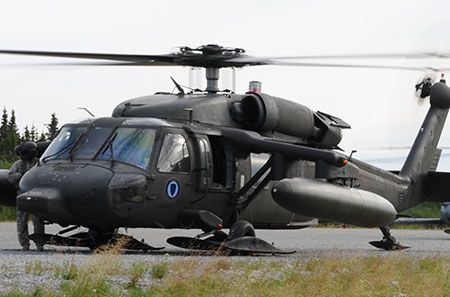Professional Insights: Enhancing Effectiveness in UH 60 Helicopter Workflow
Recognizing the Mechanics and Engineering Behind Uh 60 Helicopters
The UH-60 helicopter, commonly known as the Black Hawk, stands as a pinnacle of modern rotorcraft modern technology, embodying a mix of durable design and detailed mechanics. As we peel back the layers of the UH-60's style, a world of elaborate systems and precise engineering comes to light.
History of UH-60 Helicopters
The history of UH-60 helicopters traces back to the late 1970s when the USA Military looked for a advanced and functional energy helicopter to replace its aging fleet. In response to this demand, the Sikorsky Aircraft Corporation created the UH-60 Black Hawk helicopter. Presented in 1979, the UH-60 rapidly became a staple in army procedures due to its impressive capacities.
The UH-60 was developed to master a selection of objectives, including army transport, clinical evacuation, digital warfare, and unique procedures. Its capability to adapt to various roles made it a beneficial possession to the U.S. uh 60. Military and other army forces around the globe
Over the years, the UH-60 system has undertaken several upgrades and variants to enhance its efficiency and maintain speed with evolving objective needs. These helicopters have seen extensive solution in problems such as the Gulf War, Afghanistan, and Iraq, showcasing their integrity and flexibility in varied functional environments. The UH-60's abundant background is a testament to its long-lasting legacy as a leading energy helicopter.

Engine and Power Systems
Utilizing cutting-edge propulsion technology, UH-60 helicopters are outfitted with innovative engine and power systems to make sure ideal performance and integrity in an array of operational scenarios. The UH-60, generally recognized as the Black Hawk, is powered by two General Electric T700-GE-701D engines, each with the ability of supplying up to 1,940 shaft horsepower. These turboshaft engines provide the needed drive for the helicopter to execute its objectives successfully, consisting of army transport, medical discharge, and battle support.

Rotor System and Aerodynamics
How do the blades system and the rules of aerodynamics of UH-60 helicopters add to their operational performance and trip capacities? The rotor system of the UH-60 helicopter plays an essential role in supplying lift and propulsion. The UH-60 features a four-bladed, fully articulated blades system that permits high maneuverability and security during flight. This design makes it possible for the helicopter to perform a variety of objectives, from transportation and clinical discharge to fight procedures.
The rules of aerodynamics likewise play a key function in the efficiency of UH-60 helicopters. The streamlined fuselage and blades blade layout reduce drag, allowing the helicopter to achieve higher rates and better additional hints gas performance. The wind resistant layout of the UH-60 likewise adds to its capacity to operate in diverse environmental problems, including high altitudes and warm temperatures.
Avionics and Flight Control Solution

In its elaborate coordination with the rotor system and aerodynamics of UH-60 helicopters, the avionics and flight control systems create an essential network of modern technologies forming the aircraft's operational capacities. In the UH-60, these systems include digital screens, interaction radios, GPS navigating, weather condition radar, and autopilot systems.
The flight control systems of the UH-60 are in charge of translating the pilot's inputs right into the suitable adjustments to the rotor system, making sure stable flight and maneuverability. These systems include hydraulic actuators, anchor servos, and computers that interact to control the main and tail rotors, along with other flight control surface areas. By exactly managing the helicopter's flight dynamics, these systems make it possible for pilots to execute a large array of missions, from transportation and search-and-rescue to combat operations, with accuracy and confidence.
Role and Applications in Air Travel
The role and applications of avionics and flight control systems in aeronautics are essential to making certain the safe and reliable operation of aircraft, including UH-60 helicopters. Avionics systems in UH-60 helicopters incorporate a variety of electronic systems that help in navigating, interaction, monitoring, and regulating different aircraft functions. These systems consist of electronic screens, auto-pilot systems, interaction radios, GPS navigation tools, and climate radar. Flight control systems play a vital function in navigating the helicopter airborne, preserving security, and ensuring accurate activities. The fly-by-wire technology made use of in modern-day UH-60 helicopters translates pilot inputs right into electronic signals, which are then analyzed by the flight control computers to adjust the airplane's control surfaces. Additionally, these systems incorporate safety and security attributes such as auto-pilot modes, terrain awareness cautioning systems, and stability augmentation systems to improve the general safety and security and functional capabilities of the UH-60 helicopters in different goals, including troop transportation, medical discharge, search and rescue, and airborne firefighting.
Verdict
In final thought, the UH-60 helicopter is a versatile aircraft with an abundant background and advanced design. Its engine and power systems, rotor system, the rules of aerodynamics, avionics, and trip control systems all function with each other to make it a efficient and trustworthy equipment.
In its complex sychronisation with the blades system and aerodynamics of UH-60 helicopters, the avionics and trip control systems develop an important network of technologies shaping the aircraft's functional capacities.The flight control systems of the UH-60 are responsible for translating the pilot's inputs into the appropriate modifications to the blades system, making sure secure trip and maneuverability. Avionics systems in UH-60 helicopters encompass a range of digital systems that aid in navigating, interaction, tracking, and controlling different aircraft features. Furthermore, these systems integrate safety functions such as auto-pilot modes, terrain understanding alerting systems, and stability augmentation systems to improve the overall safety and security and operational capacities of the i was reading this UH-60 helicopters in numerous objectives, consisting of army transportation, medical emptying, search and rescue, and airborne firefighting.
Its engine and power systems, blades system, the rules of aerodynamics, avionics, and flight control systems all function together to make it a reliable and effective machine.